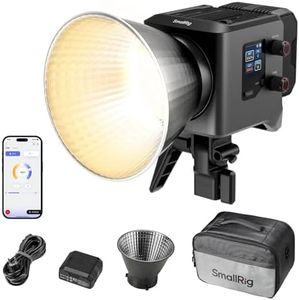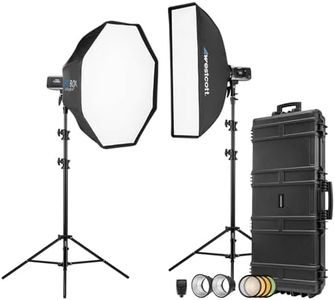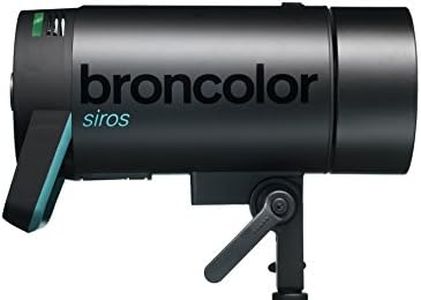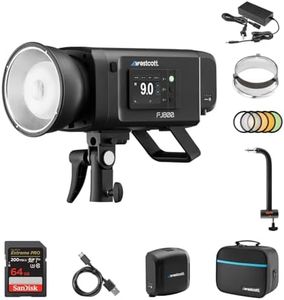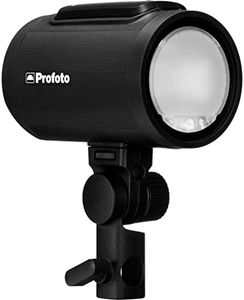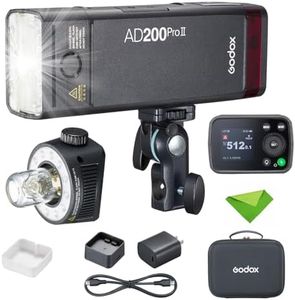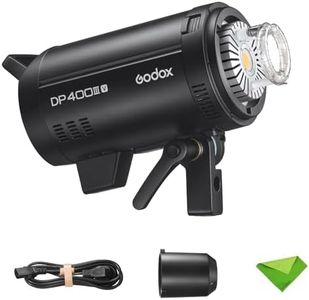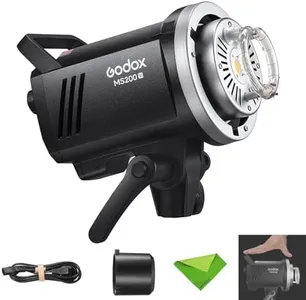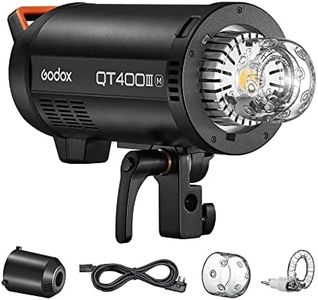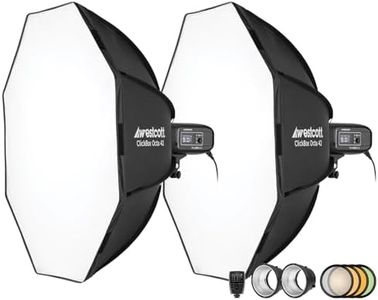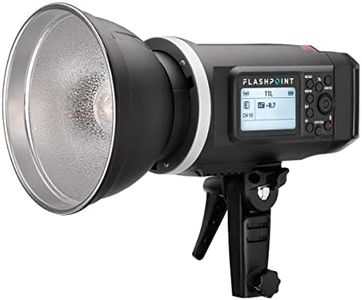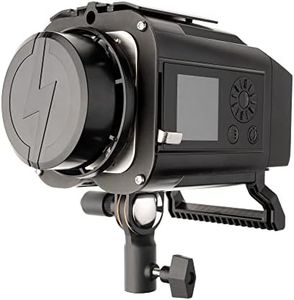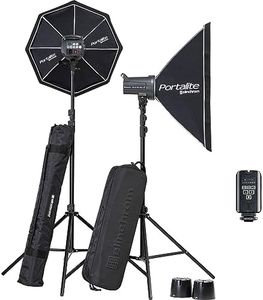10 Best Studio Strobe Lights 2025 in the United States
Our technology thoroughly searches through the online shopping world, reviewing hundreds of sites. We then process and analyze this information, updating in real-time to bring you the latest top-rated products. This way, you always get the best and most current options available.

Our Top Picks
Winner
Westcott FJ400 II Strobe 2-Light Location Hard Case Kit with FJ-X3 M Universal Wireless Trigger
The Westcott FJ400 II Strobe 2-Light Kit is designed for photographers who need portable yet powerful lighting, especially on location. Each strobe delivers 400 watt-seconds of power, which is strong enough for many studio and outdoor shoots. The included removable batteries allow for over 550 full-power flashes per charge, making it very convenient when you’re away from AC power. Recycle times are impressively fast, ranging from 0.01 to 0.9 seconds, so you can shoot quickly without waiting long for the flash to be ready again. Flash duration is extremely short—down to 1/24,000 of a second—helping to freeze fast motion with precision, great for action or product photography. The color temperature stays stable around 5500K, meaning your light will remain consistent and daylight balanced throughout your shoot.
Wireless control is handled via the FJ-X3 trigger, which offers compatibility with multiple camera brands and easy operation through an OLED touchscreen. You also get helpful features like high-speed sync and various flash sync modes for creative flexibility. The kit comes with a durable, crushproof hard case that’s watertight, making transportation and storage safe and organized. The kit weighs 49 pounds, which might be cumbersome if you travel light.
This kit is a robust, quick, and reliable strobe setup, especially useful for both studio and on-location work where portability and power matter.
Broncolor Siros 800 S WiFi/RFS 2
Most important from
2 reviews
The Broncolor Siros 800 S WiFi/RFS 2 is a high-quality studio strobe light suitable for professional photographers who need reliable and versatile lighting. It offers a strong power output with over 9 f-stops of flash energy control, allowing precise adjustment from very low to full power. Flash duration is very fast, ranging from about 1/4000 to 1/350 of a second depending on energy, which helps freeze motion effectively in your shots.
The modeling light uses a 300W halogen bulb, providing consistent and clear preview lighting to see how your scene will look before firing the flash. It supports wireless control via WiFi and RFS 2, making it easy to adjust settings remotely, which is great when you work in larger studios or on complex setups. The unit weighs almost 8 pounds and measures about 12.6 by 7 inches, which may be a bit bulky if you need highly portable solutions.
This strobe is ideal for photographers needing precise, fast, and powerful lighting control in studio environments, especially those who value wireless flexibility and fast flash recycling for dynamic photo sessions. One downside is that it relies on halogen for the modeling light, which can run hot and consume more power compared to LED alternatives.
Most important from
2 reviews
Westcott FJ800 Strobe with AC/DC Battery | 800Ws Strobe with 250+ Full Power Flashes with Waith 8" Shorty Offset Extension Arm and 64GB Extreme PRO SDXC Memory Card Bundle Set
The Westcott FJ800 Strobe is a powerful and versatile lighting option for studio and outdoor photography, boasting 800Ws of output that delivers bright, professional-quality light. Its standout feature is the included FJ Pro AC/DC Battery, allowing photographers to shoot over 250 full-power flashes without worrying about being tethered to an outlet—great for on-location work. The bundle comes with useful accessories like a frosted glass dome, a 55-degree magnetic reflector, and a set of color gels that help customize lighting effects and color temperature, adding creative flexibility.
The Waith 8" Shorty Offset Extension Arm included lets you position the light precisely, supporting heavier modifiers with secure mounting, which is excellent for complex lighting setups. Another bonus is the fast and durable 64GB SanDisk memory card included, which is useful for photographers managing large image files or video but not directly related to the light’s performance. Weighing nearly 15 pounds and packaged with a sturdy gear case, this strobe is built for both studio permanence and mobile shooting.
This FJ800 suits photographers who want strong lighting power combined with battery freedom and a well-rounded accessory kit, making it ideal for a wide range of shooting scenarios.
Buying Guide for the Best Studio Strobe Lights
Choosing the right studio strobe lights can significantly impact the quality of your photography. Strobe lights are essential for controlling the lighting environment, ensuring that your subjects are well-lit and your images are sharp and vibrant. When selecting studio strobe lights, it's important to consider several key specifications to ensure you get the best fit for your needs. Understanding these specs will help you make an informed decision and achieve the desired results in your photography projects.FAQ
Most Popular Categories Right Now
